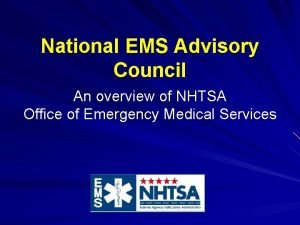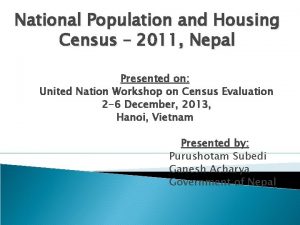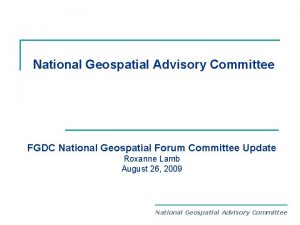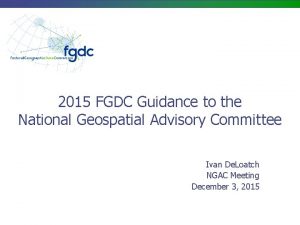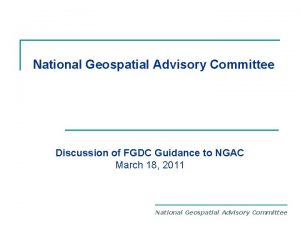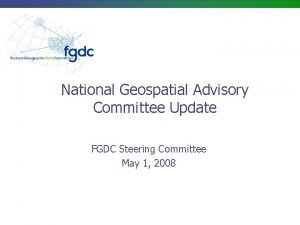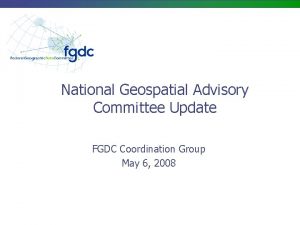2011 FGDC Guidance to the National Geospatial Advisory







- Slides: 7

2011 FGDC Guidance to the National Geospatial Advisory Committee FGDC Executive Committee March 17, 2011

Innovative Strategies for Geospatial Programs and Partnerships Provide feedback and recommendations on how FGDC partner agencies can take the use of geospatial data and technology to a new level in the future by: n n n Strategically leveraging and influencing technologies, policies, and trends Fostering a data integration environment that facilitates better decision-making and supports place-based policies Utilizing public-private partnerships and other innovative solutions to develop geospatial data, fill critical data gaps, and leverage scarce resources. 2

Geospatial Platform Implementation As the Platform moves into implementation, the FGDC will request continuing feedback and advice from the NGAC on opportunities to facilitate interagency and intergovernmental collaboration, including the following topics: n n n Are there specific offerings (data, services, applications) available from State/Regional/Local/Tribal governments that should be pursued for integrating with the Federal Geospatial Platform in the short term? What are the incentives that the Federal government should consider providing to encourage non-Federal contributions to the Platform? What are the best mechanisms for identifying ongoing requirements for the Platform and potential contributions to the Platform from our State/Regional/Local/Tribal partners? 3

Geospatial Workforce Development Provide recommendations on approaches to develop intergovernmental and public-private strategies to facilitate the development, training, and retention of a highly skilled workforce to meet the expanding geospatial needs of public and private-sector organizations. n Examine opportunities for synergies with the Administration’s Science, Technology, Engineering, and Mathematics (STEM) education initiatives. 4

Emerging Technologies Provide analysis, advice, and recommendations on the impacts that new and emerging technologies are likely to have on the management and use of federal geospatial data and programs. n Identify opportunities to utilize cloud computing technology and resources in innovative ways to support geospatial programs. 5

Geospatial Partnerships with Tribal Governments Provide advice and recommendations on innovative approaches to develop collaborative partnerships with Tribal governments to foster effective development of geospatial data and capabilities. 6

Geospatial Programs & Initiatives Provide feedback and recommendations on key Federal geospatial initiatives, programs, and issues, upon request from the FGDC partner agencies through the DFO. Examples may include, but are not limited, to: n n n Broadband Mapping National Parcel Data Geolocation Privacy Transportation for the National Elevation Data 7


